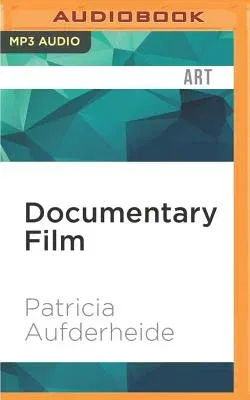Documentary film can encompass anything from Robert Flaherty's
pioneering ethnography Nanook of the North to Michael Moore's
anti-Iraq War polemic Fahrenheit 9/11, from Dziga Vertov's artful
Soviet propaganda piece Man with a Movie Camera to Luc Jacquet's
heart-tugging wildlife epic March of the Penguins. In this concise,
crisply written guide, Patricia Aufderheide takes readers along the
diverse paths of documentary history and charts the lively, often fierce
debates among filmmakers and scholars about the best ways to represent
reality and to tell the truths worth telling.
Beginning with an overview of the central issues of documentary
filmmaking--its definitions and purposes, its forms and
founders--Aufderheide focuses on several of its key subgenres, including
public affairs films, government propaganda (particularly the works
produced during World War II), historical documentaries, and nature
films. Her thematic approach allows listeners to enter the subject
matter through the kinds of films that first attracted them to
documentaries, and it permits her to make connections between eras, as
well as revealing the ongoing nature of documentary's core controversies
involving objectivity, advocacy, and bias. Interwoven throughout are
discussions of the ethical and practical considerations that arise with
every aspect of documentary production.
Drawing on the author's four decades of experience as a film scholar and
critic, this book is the perfect introduction not just for teachers and
students but also for all thoughtful filmgoers and for those who aspire
to make documentaries themselves.

